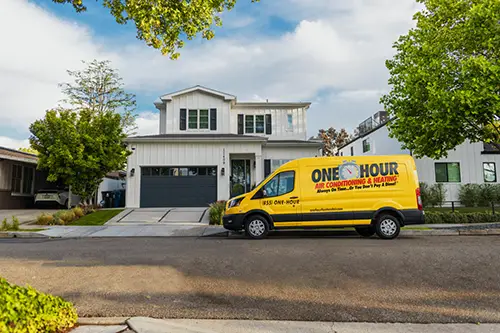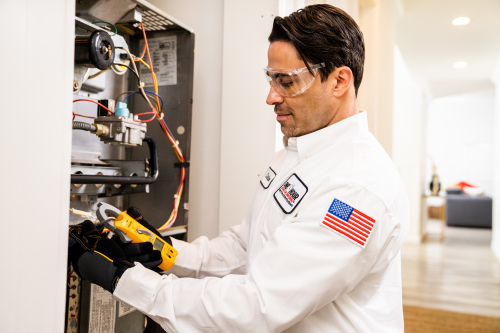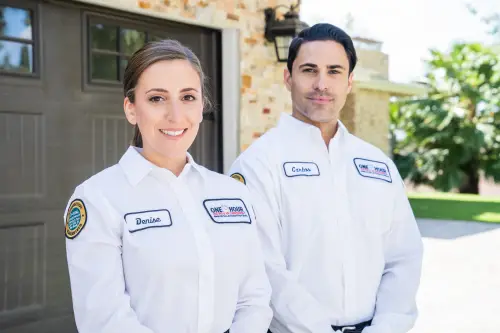Finding Your Perfect Furnace Size: It’s Not As Complicated As You Think!
Choosing the right size furnace is like finding the perfect pair of shoes you want something that fits just right. An incorrectly sized furnace can lead to inefficiency, higher energy bills, and discomfort. Too small, and your home struggles to stay warm during winter nights. Too large, and the system wastes energy while cycling on and off.
This post will guide you through understanding what furnace size means, why it matters, and how to determine the ideal size for your home. By the end, you’ll feel confident making informed decisions for a cozy, energy-efficient household.
Why Furnace Size Matters
Many people assume that bigger is better when it comes to furnaces. Yet, this approach can cost you. Furnace size isn’t about physical dimensions rather, it refers to its heating capacity, measured in BTUs (British Thermal Units). The right heating capacity ensures your home stays warm without consuming excess energy or wearing down the HVAC system prematurely.
Here’s what can happen if the size is off:
An undersized furnace struggles to maintain the desired indoor temperature, especially during extreme cold. The system works overtime, increasing the chance of breakdowns and boosting your energy costs.
An oversized furnace heats your home too quickly, leading to frequent cycling. This shortens the lifespan of the system and causes uneven heating, leaving some rooms too warm while others remain chilly.
Investing time to get the correct size will save you money, improve comfort, and extend the lifespan of your furnace.
How Furnace Size Is Calculated
Furnace sizing is a bit more complex than just measuring your square footage. It’s about how much heat your home needs in relation to your local climate, insulation, and layout. Here are the main factors professionals consider:
1. Square Footage of Your Home
Start with the square footage of your home. This is one of the most significant factors in determining the BTU requirements. A general rule of thumb is to multiply your square footage by a BTU factor based on your climate region.
For example:
- Mild climates: 30-35 BTUs per square foot
- Moderate climates: 40-45 BTUs per square foot
- Colder climates: 50-60 BTUs per square foot
- For a 2,000-square-foot home in a moderate climate, you’d need a furnace with roughly 80,000 BTUs (2,000 x 40 BTUs).
2. Climate Zone
Your region plays an enormous role. Homes in Alaska need far more heating power than those in Florida, where winter temperatures remain mild. Climate zones are usually categorized into five regions, from warm to freezing. Polished furnace calculations balance these details to cater to your house’s specific needs.
3. Insulation Quality
Is your attic properly insulated? Are your windows double-paned? Poor insulation means heat escapes easily, which drives up BTU requirements. Meanwhile, well-insulated homes require less heating power.
4. Home Layout and Design
High ceilings, large windows, and open floorplans impact the size of furnace you’ll need. Heat rises, so homes with multiple stories or vaulted ceilings require careful consideration.
5. Age and Efficiency of the Home
Older homes may lack modern insulation standards, requiring a more powerful furnace to stay warm. On the other hand, newer construction tends to be more energy-efficient, allowing for smaller furnace sizes.
Common Furnace Sizes and What They Mean
Furnaces commonly range from about 40,000 to 150,000 BTUs, divided into distinct sizing categories to suit differing home sizes and layouts.
- 40,000-60,000 BTUs are generally for spaces under 1,500 square feet, like small homes or apartments.
- 80,000-100,000 BTUs can heat average-sized homes around 2,000 square feet.
- 120,000-150,000 BTUs are designed for larger homes exceeding 3,000 square feet or for homes in colder climates that need higher heat outputs.
Your home’s specifics, insulation, ceiling height, and climate zone will ultimately influence where it falls in this range.
Manual J Calculation for Precision
While the general guidelines above give you a solid starting point, HVAC professionals rely on a more in-depth process called the Manual J load calculation. This highly detailed assessment accounts for every aspect of your home, from sunlight exposure to air leakage rates to determine the precise heating (and cooling) requirements for your space. If you’re serious about getting furnace sizing exactly right, contact a professional HVAC technician for a Manual J evaluation.
Benefits of Choosing the Right Furnace
Picking the correctly sized furnace offers several significant advantages:
- Improved Energy Efficiency: Your furnace uses just the right amount of energy—neither overworking itself nor wasting fuel.
- Lower Bills: Energy-efficient heating systems lead to noticeable savings on your monthly utility bills.
- Longevity of Equipment: Proper sizing prevents excessive wear and tear, extending the life of your furnace.
- Enhanced Comfort: Say goodbye to uneven heating, inconsistent temperatures, and drafts.
What Happens If You Choose the Wrong Furnace?
Homeowners sometimes overlook furnace size when installing or replacing their system.
The consequences of choosing the wrong furnace from minor inconveniences to costly problems:
- Hot and Cold Spots: An oversized system cycles so quickly it doesn’t heat all areas evenly.
- High Repair Costs: Both undersized and oversized furnaces endure extra stress, leading to frequent breakdowns.
- Wasted Energy: Oversized models consume far more energy than necessary, which defeats the purpose of an efficient heating system.
Avoid these pitfalls by prioritizing proper sizing.
Should You Go It Alone or Call a Pro?
While there’s plenty of information available online, the best results often come with professional guidance. An HVAC expert can take all the guesswork out of the sizing process. They’ll calculate your home’s heat load, account for local climate, and recommend the perfect unit.
If you’re replacing an older furnace, resist the temptation to simply match its size. Your home’s needs may have changed since the original equipment was installed—especially if you’ve upgraded windows, added insulation, or remodeled your space.
Steps to Take Next
If you’re gearing up to replace your furnace or install one in a new home, here’s a quick recap to help you take action:
- Assess your home’s square footage and climate zone.
- Take stock of your home’s insulation and design features.
- Use these details to estimate the BTU range using the guidelines above.
- Reach out to an HVAC professional for a Manual J calculation.
- Select a furnace with the right capacity for your specific needs.
Don’t settle for guessing or rushing the process—your comfort, energy bills, and system’s longevity depend on getting it right.
The Bottom Line on Furnace Sizes
The perfect furnace for your home isn’t one-size-fits-all. It’s one that suits your unique needs, factoring in your climate, square footage, and insulation. The goal is to find a system that provides consistent heat without wasting energy or driving up costs.
If you’re ready to make your home efficient and warm, consult with an HVAC specialist today. They’ll help ensure your furnace is ready for any winter chill that comes your way.
